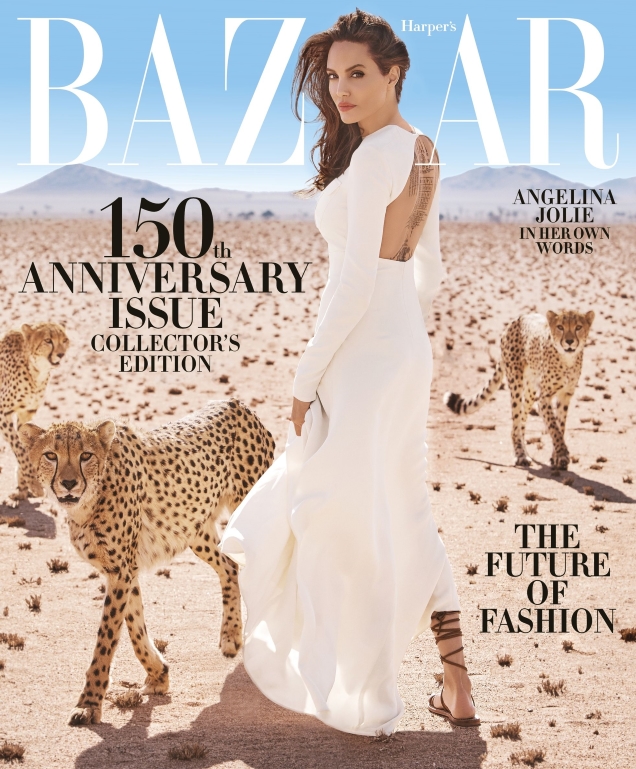Harper’s Bazaar Celebrates 150 Years: The History Behind the Iconic Magazine

By Emily Kelleher
In 1867, as the Industrial Revolution made life more comfortable for a new class of affluent Americans, three brothers created what they called “a repository of fashion, pleasure, and instruction.” They called it Harper’s Bazar, eventually adding a second “a” to the logo in 1992, making it Harper’s Bazaar. Inspired by successful magazines in Europe, the zine was modeled after Berlin’s Der Bazar, which covered fashion trends throughout Paris, London and Vienna, but also included literary pieces by Charles Dickens, an advice and etiquette column by Mary Elizabeth Wilson Sherwood, and stories on French and English culture and gossip. It was centered around the idea that keeping up with style made one more attuned to high culture.
This year, Harper’s Bazaar turned 150 years old. On April 20, the iconic magazine celebrated by projecting some of its most memorable covers and shoots across the 42 stories of the Empire State Building for all of N.Y.C. to see. Celebrities like Rihanna, Audrey Hepburn, and Gigi Hadid were among the historic faces featured on the building. And earlier that month, editor in chief Glenda Bailey released Harper’s Bazaar: 150 Years: The Greatest Moments, a book highlighting the publication’s most distinguished works from its archives. And now, the magazine is honoring its anniversary in the November issue, which hit newsstands Oct. 24. In this collector’s edition, cover star Angelina Jolie not only poses with cheetahs at an animal sanctuary in Namibia, but also writes a letter to readers from the African country. She ponders what a Harper’s Bazaar reader from 1867 would think of today’s women: how far we have come and how far we have to go.
She predicts that in another 150 years, technology will enable us to become closer to putting an end to poverty, human rights issues, and the destruction of the environment. However, she insists: “it is what we choose to do with the freedom we have that will make all the difference. If my life experience has taught me anything, it is that what you stand for, and what you choose to stand against, is what defines you.”
Editor in chief Bailey said Jolie “is someone who walks her talk and she has been so instrumental in highlighting women’s issues and conservation issues.” And Jolie seems to be an appropriate choice for a magazine that has historically covered such topics. Harper’s Bazaar was one of the first major publications to advocate for women’s suffrage and champion women’s education. Back in 1867, the very first editor in chief was a woman, Mary Louise Booth, who had previously been a New York Times reporter and translator fluent in Latin, French, and German.
And Bailey is equally accomplished. She came to the magazine in 2001, formally the editor in chief of Marie Claire, and now has several ASME awards under her belt, recognition from Amnesty International for coverage of human rights issues, and the Ovarian Cancer Research Fund’s Legends award for Harper’s Bazaar’s fundraising efforts.
On her time at Harper’s Bazaar and the legacy it’s left, she told Business of Fashion: “I wanted to create a party that everybody’s invited to. And that’s what happened.”